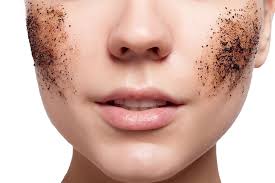Introduction
Exfoliation is one of the most effective ways to reveal smoother, brighter skin—but not all exfoliation is the same. There are two main methods: chemical exfoliation, which uses acids or enzymes, and physical exfoliation, which relies on scrubs or tools. Choosing the right type depends on your skin type, sensitivity, and goals. Understanding the differences can help prevent irritation and maximize results.
What Is Chemical Exfoliation?
Chemical exfoliation involves ingredients that dissolve the bonds holding dead skin cells together.
Common Types
-
AHAs (Alpha Hydroxy Acids) – Glycolic, lactic, mandelic acids; best for dryness, dullness, or uneven tone.
-
BHAs (Beta Hydroxy Acids) – Salicylic acid; penetrates pores, making it ideal for oily or acne-prone skin.
-
PHAs (Polyhydroxy Acids) – Gentler acids like gluconolactone; suitable for sensitive skin.
-
Enzymes – From fruits like papaya or pineapple; mild, surface-level exfoliation.
Pros
-
Even, consistent exfoliation
-
Can target deeper concerns like acne, hyperpigmentation, or fine lines
-
Often more gentle long-term than scrubbing
Cons
-
Overuse may cause irritation or dryness
-
Requires sunscreen, as skin becomes more sensitive to the sun
What Is Physical Exfoliation?
Physical exfoliation uses friction to manually slough away dead skin cells.
Common Methods
-
Scrubs – Containing sugar, salt, rice powder, or microbeads (avoid harsh or jagged particles).
-
Exfoliating Tools – Brushes, sponges, or textured cloths.
Pros
-
Immediate smoothness
-
Can improve circulation temporarily
-
Easy to incorporate into a routine
Cons
-
Can cause micro-tears if particles are too rough
-
Less effective for deep issues like pigmentation or clogged pores
-
May aggravate sensitive or acne-prone skin
Which Exfoliation Is Safest for Your Skin Type?
-
Oily/Acne-Prone Skin
→ Best: BHAs (like salicylic acid) to clear pores
→ Caution with: Harsh scrubs, which can worsen breakouts -
Dry/Dehydrated Skin
→ Best: Lactic acid or PHAs for gentle hydration and exfoliation
→ Caution with: Over-scrubbing, which can strip natural oils -
Sensitive Skin
→ Best: PHAs or enzyme exfoliants
→ Caution with: Strong acids or gritty scrubs -
Normal/Combination Skin
→ Best: A balance—occasional AHAs or BHAs, with light physical exfoliation if tolerated
→ Caution with: Using both methods too frequently -
Mature Skin
→ Best: AHAs (like glycolic acid) to smooth fine lines and improve radiance
→ Caution with: Aggressive scrubs, which can thin delicate skin
Safe Exfoliation Tips
-
Start Slowly – 1–2 times per week before increasing frequency.
-
Listen to Your Skin – Stop if you notice stinging, redness, or sensitivity.
-
Avoid Mixing Too Many Exfoliants – Combining strong acids with scrubs can lead to over-exfoliation.
-
Always Use Sunscreen – Exfoliation increases sun sensitivity.
-
Patch Test First – Especially important for sensitive or acne-prone skin.
Key Takeaway
Both chemical and physical exfoliation can improve skin texture and brightness—but the safest option depends on your skin type and tolerance. Chemical exfoliants often provide more targeted benefits with fewer risks of physical damage, while physical exfoliation offers immediate results when used gently.



